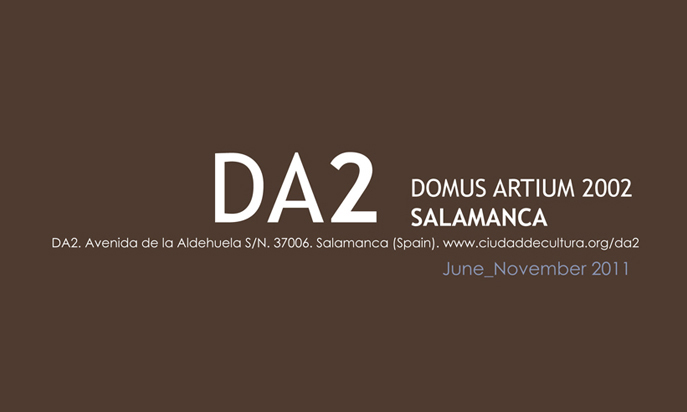Pedro Barbeito
Museum voor Moderne Kunst Arnhem (MMKA), Arnhem, The Netherlands
29 January – 8 May, 2011
Domus Artium (DA2), Salamanca, Spain
20 June – 30 October, 2011
The End of History…and The Return of History Painting
Curated by Paco Barragan
Miguel Aguirre (Peru), Pablo Alonso (Spain/Germany), Matthias
Köster (Germany), Ignacio Goitia (Spain), Ronald Ophuis (The
Netherlands), Pedro Barbeito (USA), Maryam Najd (Iran/Belgium),
Nicola Verlato (Italy), Trevor Guthrie (Canada), Simeón Saiz
(Spain), Pascal Danz (Switzerland), Gamaliel Rodríguez (Puerto
Rico), Carlos Salazar (Colombia), Sandra Gamarra (Peru), Iñaki
Gracenea (Spain), Judy Sirks (Norway), Fabián Marcaccio
(Argentina/USA), Alexis Esquivel (Cuba) and Diego Vallejo (Spain).
CONCEPT
The End of History… and the Return of History Painting references a
long line of theories on “Ends of History” by thinkers such as Hegel,
Kojève and Fukuyama. In Fukuyama’s thesis “The End of History”,
1989, he proclaimed the end of all ideological evolution and the
world-wide triumph of liberal democracy. Departing from his thesis
this exhibition analyzes the return of painting as both a consequence
of a more conservative zeitgeist and as a response to historical events
like September 11. Within this painting ‘revival’ there’s a return
among a group of artists, engaged in a critical analysis of today’s
society, to a kind of ‘anti-history painting’.
The artwork in The End of History… and the Return of History Painting
reflects on the relationship between painting and our historical
moment as well as investigating paintings’ relationship to
photography, video and television – the media that usurped its role
as documenter of history.
THE ENDS OF HISTORY
The central theory of Fukuyama’s essay1 proclaims that humanity has
achieved a final point in its ideological evolution with the triumph of
Western liberal democracy over its presumed imitators at the end of
our last century. Both Fascism, which disappeared with the Second
World War and post-war Communism which vanished with the fall
of the Berlin Wall, gave way as threats to Capitalism. The end of
history doesn’t entail the cessation of change or conflict, but once
competitors have been deprived of all ideological or military
components, all adversity will be reduced to economic matters. This
means basically that, once Fascism and Communism had been
defeated, Western liberal democracy emerges as the final form of
human government, which will bring history to an end.
—
1 Fukuyama has taken a.o. on Hegel’s idea of the ‘present escaping from barbarism’ and the ‘exhaustion of
spiritual forms’, and Kojève’s economical theories in which ‘wars and revolutions were the propelling
forces of history’, and as a last resort ‘the market and its products would decide its end’.
THE RETURN OF PAINTING
Since the mid 90’s we have experienced the return of painting, which
has coincided with the peak of neo-conservatism and liberal
capitalism. Actually, we should talk not so much about the return of
painting, as much as a blowout/excess of the artistic medium par
excellence. “It is said that the actual interest –writes David Lillington2-
is the consequence of 9/11. The art world has panicked and goes back
to the most safe, commercial, and conservative art form: painting.
Maybe it’s true, maybe not, but it is evident that painting is witness to
a small resurgence.” History always repeats itself, albeit with a small
retouching here and there. Back in the 80’s, Benjamin Buchloh3 had
already outlined, in the form of “a new classicism”.
Pablo Alonso You Never Had it So Good 4
__
2 Lillington, David Is schilderkunst weer urgent?, Metropolis M, 2003, nr. 2, p. 57-58
3 Buchloh, Benjamin “Figures of Authority, Ciphers of Regression,” reprinted from October 16 (Fall
1981), pages 39-68 and published as part of an essay collection titled Art After Modernism: Rethinking
Representation, various authors, Brian Wallis (ed.) The New Museum of Contemporary Art, New York,
1984, pages 107-137.
THE RETURN OF (ANTI-)HISTORY PAINTING
From its origins, history painting has been one of the most important
pictorial genres. Monarchs and kings commissioned artists to depict
scenes of tournaments and battles with splendor and ceremony, and
also the Church used religious themes as a tool for propaganda. But
after the manipulation and the discredit of history painting
throughout centuries, it is quite comprehensible that this genre has
practically disappeared until today.
All this has taken us to the advent of a kind of ‘anti-history’ painting
in which it’s not about melodramatic and idealized compositions at
the service of a national conscience, glorification of the past or certain
heroes4, but a critical analysis of relevant recent political or historical
events: from the War of the Balkans, Iraq, to the terrorist attacks in
New York and Madrid, Guantanamo, the guerrilla in Colombia,
religious Islamic and Christian fundamentalism, war on terror, and
the fallacies of ‘neo-con’ capitalism.
PAINTING AND MASS MEDIA
Today’s information and mass media society have brought about a
diffused ‘aestheticization’ that freely mixes political and war images
with those proceeding from adds, commercial cinema and
entertainment. Be it by hiding images behind layers, making them
transparent or pixelating them, applying faded colors and thick paint,
time is being slowed down through a physical rendering. But,
besides this ‘slowness’ and physicality that we traditionally associate
with the painting medium, it’s also paradoxically going through an
‘acceleration’ process through its newfound relationship with Iphones,
scanners, Photoshop, Facebook, satellites, digital cameras,
and 3-D programs.
The artists portrayed in The End of History… and the Return of History
Painting show that painting as a medium offers renewed possibilities
and is able to provide an alternative and more critical reading of
contemporary history while it engages with its own technological
and mass-media context.
__
4 On some occasions we find challenging and critical visions against state oppression; this is particularly
the case with Jacques-Louis David’s ‘Oath of the Horatii’ (1784), Goya’s ‘The Third of May 1808’, or
Gericault’s ‘The Raft of the Medusa’ (1819).

